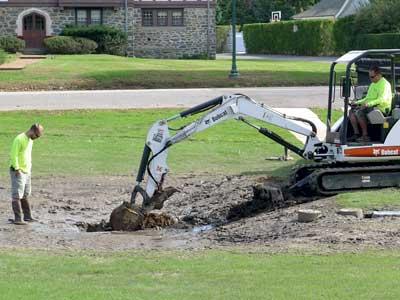Income Dip at Beaches

A decline in revenue from parking despite high attendance at Main Beach and Two Mile Hollow this summer was reported at an East Hampton Village Board work session last Thursday, drawing suggestions about the causes and how to counteract them.
Francis Mott, the village’s beach manager, described the fall in parking receipts, while Becky Molinaro, the village administrator, said a four-year, fiscal-year comparison confirmed that expenses had risen while revenues declined.
Ms. Molinaro suggested that the shuttle bus called Free Ride, which takes beachgoers from the long-term parking lot to Main Beach, was partly responsible and noted possible solutions under consideration, which she said were an increase in the number of daily passes available for Main Beach and Two Mile Hollow, an increase in the fee itself, or an increase in the number of nonresident permits sold. The board, she said, would have to decide how to address the problem.
Mr. Mott also told the board that summer at Main Beach had been “very nice,” with only a few bathers rescued from the surf and none hospitalized. He also said dog owners had generally abided by the regulations and cleaned up after their pets. A new employee charged with picking up trash between 5 and 7 a.m. made for a cleaner beach, while reducing the burden on other staff, he said.
“On behalf of the board of trustees and everyone that took advantage of the beach, we offer our compliments to you,” Mayor Paul F. Rickenbach Jr. said to Mr. Mott, asking him to convey the message to the staff. “It’s an asset, and we’re very proud to put our best foot forward.”
Meanwhile, the board’s attention was drawn at the meeting to the two bioswales, drainage courses designed to trap pollutants and silt from surface water runoff, which are under construction in the village, and to standing water in the one at the green north of Town Pond. The other bioswale is near Hook Mill and the North Cemetery. The project is an effort to improve the health of Hook Pond, where cyanobacteria, or toxic blue-green algae, bloomed this year.
According to Ms. Molinaro, Drew Bennett, a consultant, had informed her on Oct. 4 that standing water caused by silt at the Town Pond bioswale required remediation. A soil boring the previous day had indicated a two to three-and-half-foot layer of silt under the topsoil. Its removal, and replacing it with sand, would alleviate the condition, he wrote.
Once the silt has been removed, the area is to be hydroseeded — planted with a slurry of seed and mulch — and rain gardens created, Ms. Molinaro said. She said the rain gardens would help remove nitrogen and phosphorus from surface water before it seeps into the ground. Piazza Horticultural, a Southampton firm, and the Eastern Long Island chapter of the Surfrider Foundation are donating design and materials for them, she said.
“We are extremely proud and supportive,” the mayor said of the effort. “It’s tangible, and I think it shows the commitment of our board of trustees as it relates to overall water quality issues.”
